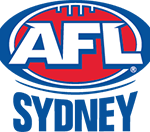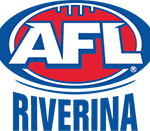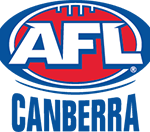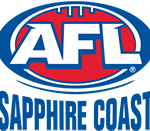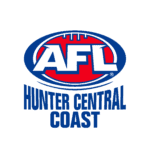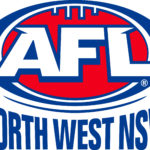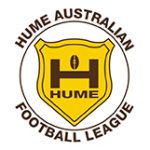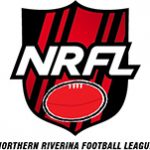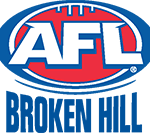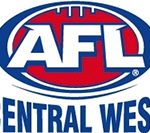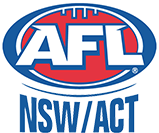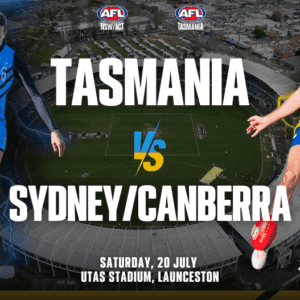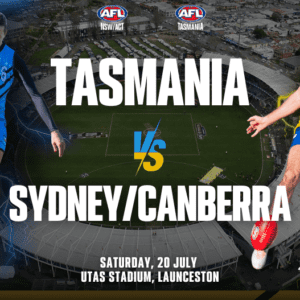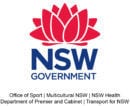ACT celebrates centenary of football

Some of the ACT’s greatest footballers will come together this Friday to celebrate the Centenary of AFL in the nation’s capital.
On Saturday, July 29, 1911 two teams from Canberra ran onto the oval inside the cycle track at Queanbeyan Park.
They were there to play the ACT’s first game of football under Australian Rules. The teams represented the Federal City Club at Duntroon (the Blues) and the Survey Camp at Canberra (the Browns)
The following is the report published in the Queanbeyan Age on the first of August 1911.
FOOTBALL
THE AUSTRALIAN GAME
An exhibition game of football, under Australian rules was played in the Park on Saturday last in the presence of a fair number of spectators. The teams were selected from the Federal City Club at Duntroon and the Survey Camp at Canberra. Owing to the limited number of men available only eleven a side were played. Colours: Federal City (blue); Survey Camp (brown). Captain Piggin led the blues and Captain Young the browns. During the first quarter the blues did all the scoring and placed one goal (6 points) and 5 behinds to their credit. The second quarter was very evenly contested, the browns playing a much improved game, the scores being even, each side placing one goal 3 behinds (9 points) to their credit. On resuming after half time, the browns were much in evidence and succeeded in scoring 2 goals to their opponents nil. Owing to rain it was decided to discontinue the play after the third quarter, the totals, browns 3 goals 3 behinds (21 points) to 2 goals 8 behinds (20 points) for the blues. Mr. A. Gilchrist was central umpire and Messrs. Ponder and Harris goal umpires. The park is an ideal ground for the Australian game the cycling track forming the boundaries. Owing to the small number, eleven on each side, many of the players were much fatigued due to the excessive following. The regulation number on each side is 18. Several players showed out very prominently and it was evident they had participated in many strenuous games. It is intended to give another exhibition game at an early date and practise is to be indulged in frequently at Duntroon.
The three organisers of the match were Charles Young (Captain of the Browns), Fred Piggin (Captain of the Blues) and Archie Gilchrist (the umpire). All three went on to be respected Canberra identities.
A.F.L. PIONEER CHARLES YOUNG – A HERO OF FROMELLES
Charles Young was born in 1885 and came from Camberwell in Victoria. He arrived in Canberra in 1910 and joined the Land Survey Office of the Department of Home Affairs. He worked with the first field survey team and by 1915 described himself as a draughtsman when he joined the army as a second lieutenant leaving Australia in March 1916 for Egypt to complete his training. In July 1916 the 59th Battalion faced its baptism of fire at Fromelles in France – much in the news of late. His battalion suffered heavy casualties and many were buried in a common unmarked grave by the Germans. The Battalion was rotated in and out of Fromelles for the next two months and Charles was promoted in the field to First Lieutenant. By October Charles contracted the dreaded dysentery. He was evacuated to Kent in England where he lost 13 kilos and was repatriated to Australia to recover. He then rejoined the Army in 1917 and spent the rest of the war in New Guinea.
On his return from the war he continued as a draughtsman with the Land and Survey Office in Canberra by then part of the Department of the Interior. He lived at 8 Boudin Street in Forrest and retired in 1947. He was secretary of the Royal Canberra Golf Club for ten years until died on 16th April 1957. He was survived by his widow Marie. Charles obituary did not mention his war service indicating that he did not tell his relatives and friends about his hard times in France. This was typical of the diggers who went through such hard times.
FRED PIGGIN – STALWART OF THE CANBERRA COMMUNITY
Fred Piggin arrived in Canberra in December 1910 where Duntroon was the scene of intense construction from 1910. Up until 1914 Duntroon was occupied by RMC staff and academics, the RMC cadets, building contractors, their workforce and public servants including Fred Piggin.
Fred was born at Corowa in 1883 and educated at Corowa Public School and Albury Grammar School. He joined the Bank of NSW in Albury before joining the new Commonwealth Public Service in the Department of Home Affairs, Melbourne in 1902. In 1910 he was transferred to Canberra as the first Commonwealth accountant and paymaster in the Federal Capital Territory. In 1912 the Home Affairs Minister, King O’Malley presented a motion to Parliament to have Fred Piggin promoted to the Administrative Division from the Clerical Division as required by the Public service Act.
In 1916 there was a press campaign in Melbourne criticising the expenditure of so much funds on sheep paddocks outside Queanbeyan while our boys were fighting in France. As a result a Royal Commission was set up to investigate the cost of construction in Canberra. On one occasion Fred asked the Works Department at Kingston Powerhouse to get some expenditure details required by the Royal Commission in Melbourne but was stalled. He found himself in the unenviable position of being unable to answer a Royal Commissioner’s enquiry and appears to have been unjustly held responsible. In 1917 he was transferred to the Department of Works, first in Sydney and later in Melbourne and then returned to Canberra with the Works Department when it was transferred back in 1929. He retired from there in 1948.
Mr. Piggin in an interview in 1948 stated that he had had the unique experience of conducting, on behalf of the Commonwealth Electoral Officer in Sydney the only referendum held in the ACT up to that time, the conscription issue during the 1914-1918 war.
Meanwhile he had taken a prominent part in Canberra’s community life. He was an original organiser of Australian football in Canberra, President of the Forrest Tennis Club from 1930 until the late 40’s and was President of the Canberra Lawn Tennis Association. He was awarded life membership of both tennis organisations. He entered both trotting and harness horses in the agricultural shows at Queanbeyan and Ginninderra (now the Royal Canberra Show). He was also President of the Horticultural Society which made him a life member. He was on the Council of the Canberra Girls Grammar School and active in the Boy Scout’s Association.
Among his official activities, Fred served on the Apprenticeship Board, the Industrial Board and during the war on the Enemy Raids Precautions Committee. He lived at Red Hill for all of his time in Canberra and died in January 1960 leaving a widow Doris , two sons Frederic and Geoffrey both of Corowa and two daughters, Nancy Horne and Dawn, both of Canberra.
PROFESSOR OF MATHEMATICS WAS FIRST FOOTBALL UMPIRE
Archie Gilchrist presided as umpire over Canberra’s first Australian Football match. He was born in Kew in April 1977 and educated at Xavier College and Ormond College in Melbourne and Melbourne University.
Archie was a Lieutenant in the university corps of officers from 1897 to 1899 when he was commissioned in the Victorian Field Company of Engineers becoming Captain of the Corps of Australian Engineers in 1903. He was appointed instructor in engineering at Melbourne Technical College and later became Professor of Engineering at the Ballarat School of Mines.
1910 found Archie in the Federal Capital Territory advising the initial team of surveyors. The Royal Military College had been established in 1911 and Archie was on the spot to be appointed Lecturer in Mathematics. In 1924 he became Professor of Mathematics and held that position until he retired in 1938.
He was recalled to Duntroon in 1941 and reappointed Lecturer in Mathematics – a position he held until 1946. Calculus Lane next to his RMC residence is reputed to have been named in his honour although by tradition all street names in Duntroon are named after Commandants. In retirement he lived at 17 Tasmania Circle, Forrest where he made himself available to students as a tutor and set and marked Public Service Board Examination papers.
Archie died in March 1964 – his wife Sarah had died in 1962. He was survived by four sons, two of whom graduated from RMC and a daughter.
